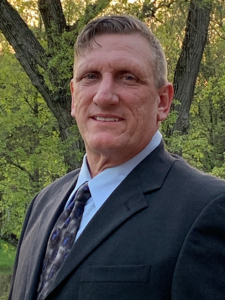
Certified Registered Nurse Anesthetists (CRNAs) are experts in anesthesia and pain management, but they’re also lifelong learners who are focused on improving patient care. Peter Pollachek, MS, CRNA, recently graduated from the University of Southern California (USC)’s Master of Science in Pain Medicine program. He is the first CRNA to do so.
Pollachek, who practices in central Illinois, has been a CRNA since 1989. He had his own anesthesia practice, Stat Anesthesia Specialists, for 30 years in addition to a pain practice where he provided pain management services. He now works at a small rural hospital, where he is the sole anesthesia provider and has a pain clinic.
When he graduated from Decatur Memorial Hospital’s Nurse Anesthesia program in 1989, he received a graduate certificate in anesthesia, not a master’s degree. At the time, nurse anesthesiology programs were just beginning to make the switch from being certificate programs to master’s programs, Pollachek said.
“Years later, I started thinking about going to another state and practicing,” he said. “I realized a lot of states now require a master’s degree for CRNAs. I wanted to go back and get my master’s, but I didn’t want to get it in anesthesia, the same subject my core curriculum was in. I stumbled across this Master of Science in Pain Medicine program out of USC and I decided I would rather pursue that.”
He added that Medicare and insurance carriers now have stricter guidelines for what types of providers can provide pain management services, and that was another motivating factor to get his master’s in pain medicine.
“Nobody will ever question your ability to do anesthesia when you’re CRNA, but with the growing area of pain medicine, I didn’t want insurance carriers and facilities coming back and questioning my experience. I wanted to learn all the latest and greatest things in pain medicine to improve care for my patients,” he said.
The program delved into the basics of pain medicine and learning everything from the cellular level, all through the anatomy and pathophysiology of pain, Pollachek said.
“We studied how to treat pain from a multifactorial approach instead of from a procedural approach or medicinal approach, and to use complementary alternative medicine approaches and behavioral approaches as well.”
He added that the head of the USC program is a physician anesthesiologist who is also a psychiatrist. That meant psychiatry training was integrated into the coursework. “We were instructed on the entire picture of treating pain — not just the physical component, but also the psychological component.”
The study of pain medicine has come a long way since the late 1980s and early 1990s, Pollachek said when he was beginning to explore ways to deliver care to alleviate patients’ pain. Back then, he worked with a rheumatologist who asked him to do pain injections for patients that had back pain, neck pain, and other types of pain. Later, Pollachek worked with a physician anesthesiologist who he trained in basic pain management. When that physician anesthesiologist left for a pain medicine fellowship, he promised to teach Pollachek everything he’d learned during the fellowship when he returned the next year. Pollachek said he was grateful for this training, as CRNAs didn’t have many opportunities to receive additional training in pain medicine in the 1990s.
Now, as the first CRNA to graduate from USC’s program, he hopes to bring his knowledge to his pain practice in Illinois.
“Learning about all the treatments available and how to integrate them into a pain medicine treatment program will allow me to provide even better care for my patients,” he said.